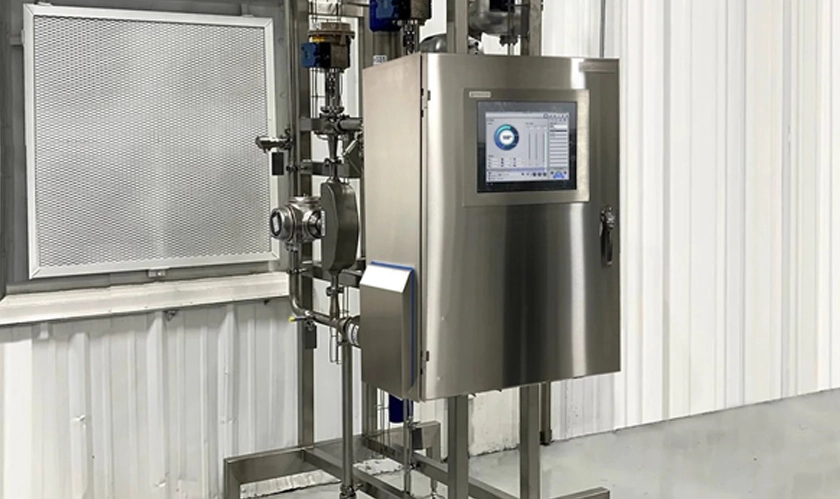Home Industry Food and beverage 5 Ways to Optimize Your Food P...
Food And Beverage

CIO Bulletin
03 May, 2024
The global food and beverage market is booming. It was worth a whopping $5.8 trillion in 2021 and is projected to keep growing steadily. Experts predict a jump to $8 trillion by 2026, with continued growth reaching over $10 trillion by 2031. That's a significant chunk of the global economy, highlighting the ever-increasing demand for food and beverages worldwide.
Do you know the biggest food companies have hidden gremlins lurking in their factories, slowing things down? We're talking clunky processes, outdated equipment, or plant layouts that make things trickier than they should be. These hidden roadblocks can hurt production speed, safety, and even food quality.
But, here is an excellent way out. There's a way to fight back: process optimization. Think of it as a secret weapon to supercharge your entire operation. Liquid Consulting significantly bridges the gap between hidden inefficiencies and a well-oiled food processing operation.
These strategies will optimize your production floor, boost efficiency, and create a more positive work environment for your team.
Ready to transform your operation?
Let's dive into the top tips for conquering inefficiency and unlocking your plant's potential.
1. Streamline Your Food Production Flow
To maximize efficiency, food processing plants must adopt a multi-faceted approach. Ever feel like your production line is stuck in a traffic jam? Ingredients pile up, workers wait around, and the whole process grinds to a halt. That's the frustration of an inefficient flow.
The good news? You can transform this slow crawl into a smooth, steady stream. Here's how:
2. Power Up with Data and Automation (the Right Kind)
Remember those sci-fi movies where everything runs on autopilot? While we might still need to arrive, data and automation can seriously boost food production. You can increase the success rate by
3. Keep Your Equipment in Top Shape
Just like a race car needs regular tune-ups to stay competitive, your food processing equipment thrives on proper maintenance. Think of it like this: a well-maintained machine runs smoothly and efficiently and consistently produces high-quality products. On the other hand, neglected equipment suffers breakdowns, reduces production speed, and can even compromise food safety.
Here's how to ensure your equipment stays in tip-top shape:
1. Implement Preventive Maintenance:
Be sure to act before a breakdown. Develop a proactive maintenance plan that schedules regular inspections, cleaning, and lubrication for all your equipment. This helps identify and address minor issues before they snowball into major problems.
2. Become a Parts Pro:
Stock up on essential spare parts for critical equipment. Having readily available replacements minimizes downtime during unforeseen breakdowns. Think of it like having a spare tire for your car – better safe than sorry.
3. Empower Your Team:
Train your team on basic maintenance tasks like cleaning equipment, identifying early warning signs of trouble, and reporting potential issues. This empowers them to become active participants in keeping things running smoothly.
4.Partner with the Pros:
Consider working with a qualified maintenance service provider for complex equipment or specialized repairs. These experts can provide in-depth inspections, handle major repairs, and offer valuable insights on extending the life of your equipment.
5.Invest Wisely:
Modern equipment often boasts features that enhance efficiency and reduce maintenance needs. While the initial investment might be higher, consider the long-term benefits like lower maintenance costs and improved overall performance.
Strategy 4: Minimizing Waste
In the food production world, waste is the enemy. It eats away your profits, creates unnecessary work, and can even impact the environment. Here's how to fight back and become a champion of efficiency:
1. Master Inventory Management:
Outdated ingredients, overstocked items, and improper storage can all lead to waste. Implement a robust inventory management system that tracks stock levels, identifies expiring products, and helps you order only what you need. Think of it like a grocery list for your entire operation – only buy what you'll use, and use what you buy.
2. Embrace Portion Control:
Overfilling containers or using excessive ingredients can be a hidden source of waste. Invest in accurate measuring tools and establish clear portion control procedures for your team. This ensures consistency across your products and minimizes unnecessary waste.
3. Get Creative with Leftovers:
Not all "waste" needs to be thrown away. Think outside the box! Leftover vegetables can be repurposed for soups or stir-fries. Fruit trimmings can be used for jams or juices. Explore creative ways to utilize leftover ingredients and minimize what actually gets discarded.
4.Become a Repurposing Pro:
Can't find a way to use leftover ingredients? Think about repurposing them for other products or processes. For example, leftover bread crusts can be ground into breadcrumbs – a valuable ingredient for many recipes. This minimizes waste and potentially creates new revenue streams.
5. Invest in Smart Packaging:
Improper packaging can lead to spoilage and waste. Invest in packaging solutions to maximize food preservation and minimize damage during transportation and storage.
6. Partner with Sustainability Champions:
Consider partnering with organizations focused on food waste reduction. They can offer valuable insights, connect you with resourceful uses for your "waste," and potentially even help you recoup some costs.
Strategy 5: Empowering Your Team
Have you ever seen a team perfectly in sync, moving like a well-oiled machine? That's the power of a well-trained and motivated workforce. Your team is more than just employees – they're the backbone of your operation, and their skills and knowledge directly impact efficiency and quality. Here's how to empower your team and unlock their full potential:
1. Invest in Training:
Provide comprehensive training on equipment operation, safety procedures, and proper food handling techniques for your team. Well-trained employees are more confident, make fewer mistakes, and can identify and address potential issues before they escalate. Think of them as food production superheroes.
2. Embrace Clear Communication:
Clear communication is key to a smooth operation. Ensure your team understands production goals, potential challenges, and the importance of their role. Regular meetings, shift briefings, and open communication channels foster a sense of ownership and accountability.
3. Motivate and Recognize Achievements:
A happy and motivated team is a productive team. Recognize their hard work, celebrate achievements, and create a positive work environment. Consider bonus programs or incentive structures based on reaching efficiency targets. A little recognition goes a long way!
4. Empower Decision-Making:
Don't micromanage! Empower your team to make informed decisions on the production line. Train them to identify minor issues and take corrective actions within defined parameters. This fosters a sense of responsibility and ownership, leading to a more engaged and efficient workforce.
5. Embrace Continuous Learning:
Encourage your team to participate in training workshops, industry conferences, or online courses to stay updated on the latest trends and technologies. This continuous learning keeps them at the forefront, and their knowledge benefits your entire operation.







